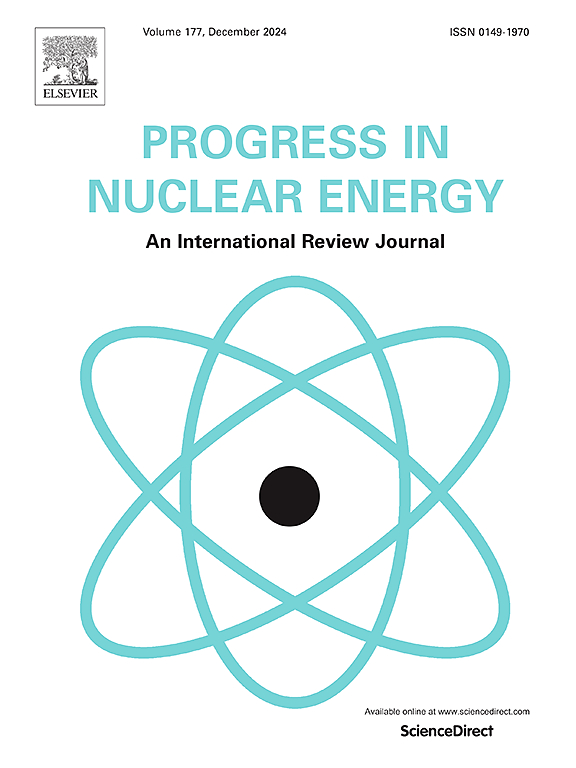Study on coupled heat transfer characteristics and performance optimization for a helical coil heat exchanger in the lead-cooled fast reactor
IF 3.3
3区 工程技术
Q1 NUCLEAR SCIENCE & TECHNOLOGY
引用次数: 0
Abstract
Helical coil heat exchangers (HCHEs) are extensively applied in thermal engineering, petrochemical engineering, nuclear reactors and refrigeration engineering etc. due to the remarkable benefits of high heat transfer efficiency with compact structures. The coupled heat transfer characteristics and performance optimization of HCHE are paramount for long-lasting operational safety of the miniaturized lead-cooled fast reactors (LFRs), especially using liquid lead and supercritical carbon dioxide (s-CO2) as the working mediums. The present work conducts a numerical study on the flow and heat transfer characteristics of lead and s-CO2 in HCHE under different mass flow and inlet temperature. Then the Non-dominated Sorting Genetic Algorithm-II (NSGA-II) is employed to carry out the geometry optimization with Performance Evaluation Criterion (PEC) and heat transfer area (HTA) as the objective functions. The results indicates that the coupled heat transfer performance is primarily affected by the mass flow of s-CO2, the mass flow of lead and the inlet temperature of lead. When the mass flow of s-CO2 increases by 52%, the overall heat transfer coefficient (HTC) of helically coiled tubes increases by 21%. To improve the comprehensive performance, three structural parameters of HCHE that should be preferred in the process of optimization design are tube-outer diameter, the number of layers and the number of tubes on the first layer.
求助全文
约1分钟内获得全文
求助全文
来源期刊

Progress in Nuclear Energy
工程技术-核科学技术
CiteScore
5.30
自引率
14.80%
发文量
331
审稿时长
3.5 months
期刊介绍:
Progress in Nuclear Energy is an international review journal covering all aspects of nuclear science and engineering. In keeping with the maturity of nuclear power, articles on safety, siting and environmental problems are encouraged, as are those associated with economics and fuel management. However, basic physics and engineering will remain an important aspect of the editorial policy. Articles published are either of a review nature or present new material in more depth. They are aimed at researchers and technically-oriented managers working in the nuclear energy field.
Please note the following:
1) PNE seeks high quality research papers which are medium to long in length. Short research papers should be submitted to the journal Annals in Nuclear Energy.
2) PNE reserves the right to reject papers which are based solely on routine application of computer codes used to produce reactor designs or explain existing reactor phenomena. Such papers, although worthy, are best left as laboratory reports whereas Progress in Nuclear Energy seeks papers of originality, which are archival in nature, in the fields of mathematical and experimental nuclear technology, including fission, fusion (blanket physics, radiation damage), safety, materials aspects, economics, etc.
3) Review papers, which may occasionally be invited, are particularly sought by the journal in these fields.
 求助内容:
求助内容: 应助结果提醒方式:
应助结果提醒方式:


